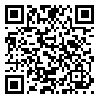BibTeX | RIS | EndNote | Medlars | ProCite | Reference Manager | RefWorks
Send citation to:
URL: http://jhsw.tums.ac.ir/article-1-5587-en.html

 , Parvin Nassiri *
, Parvin Nassiri * 
 2, Mohammad Reza Monazzam3
2, Mohammad Reza Monazzam3 
 , Farideh Golbabaei4
, Farideh Golbabaei4 
 , Hossein Arabalibeik5
, Hossein Arabalibeik5 
 , Ali Akbar Shamsipour6
, Ali Akbar Shamsipour6 
 , Armin Allahverdy7
, Armin Allahverdy7 

2- Professor, Department of Occupational Health Engineering, School of Public Health, Tehran University of Medical Sciences, Tehran, Iran ,
3- Professor, Department of Occupational Health, School of Public Health and Center for Air Pollution Research (CAPR), Institute for Environmental Research (IER), Tehran University of Medical Sciences, Tehran, Iran
4- Professor, Department of Occupational Health Engineering, School of Public Health, Tehran University of Medical Sciences, Tehran, Iran
5- Research Center for Science and Technology in Medicine (RCSTIM), Tehran University of Medical Sciences, Tehran, Iran
6- Associate Professor, Department of Physical Geography, School of Geography, University of Tehran, Tehran, Iran
7- Assistant Professor, Radiology Department, Allied Faculty, Mazandaran University of Medical Sciences, Sari, Iran
Introduction: To evaluate heat stress in the workplace different indices are used. But, none of these measures have been widely accepted. The aim of this study was to determine effective criteria in selecting a heat stress index and weighting of these criteria.
Material and Method: This study is a qualitative study that was designed and conducted within 10 stages. In the current study, effective criteria for choosing a heat stress index was determined by using Delphi technique and expert’s opinions (30 people), and then the fuzzy analytic hierarchy process was used for weighting and prioritization of these criteria.
Results: Analyzing the completed questionnaires by the experts and according to the percentage of respondents, 11 criteria were finally selected. “Simplicity” criteria by %76.6 had the highest percentage of response. But, the relative weight of this criteria was 0.041, and had the lowest weight after the “low cost” criteria. The criteria relating to the “Standard” item was 0.141as the highest relative weight.
Conclusion: It can be concluded that the first step to have a reliable and accurate measurement is to choose a proper and correct index. Based on specialists and expert’s opinions, standardization of the index is the most important selection criteria. Other criteria that must be considered were accuracy, reliability and good correlation with the physiological strain indices.
Received: 2017/03/5 | Accepted: 2017/03/5 | Published: 2017/03/5
| Rights and permissions | |
 |
This work is licensed under a Creative Commons Attribution-NonCommercial 4.0 International License. |



